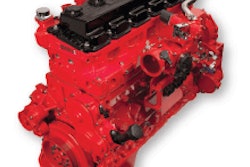
Citing “no effective recycling method for concrete rubble,” concrete technology group researchers in Holzkirchen, Germany with the Fraunhofer Institute for Building Physics IBP, are developing a method of their own.
And it involves bolts of lightning.
Today, concrete is recycled by shredding it. However, the process produces a huge amount of dust with the by-product stone fragments used as sub-base for roads. According to an article in Fraunhofer’s Research News, researcher Volker Thome calls this current method of recycling, “downcycling” since the materials being reused deteriorate with each cycle.
According to the article, Thome says a much more efficient way to recycle concrete would be to separate the stone particles from the cement stone so that “the gravel could easily be reused as an aggregate in new cement.” He added that if it were possible for the actual waste byproduct of recycling concrete could be used as a concrete substitute itself, CO2 emissions would be reduced as well.
So Thome and his team went back to a method used by Russian scientists in the 1940s: electrodynamic fragmentation. This is where the lightning comes in. Because lightning flows through the path of least resistance, in concrete that path just happens to be between the gravel and cement stone. Now, this all happens very quickly. The researchers submerge the concrete in water (lightning isn’t too fond of traveling through solids and the water acts basically as an antenna that also strengthens the impulse of electricity) and send in a 150 nanosecond bolt of lightning.
Once the lightning travels its path through water and concrete, Thome says a “plasma channel is formed” inside the concrete that swells into a wave of pressure “comparable to a small explosion” that breaks the concrete into the desired aggregate and cement stone.
The researchers can currently process one ton of concrete per hour, but they’d like to improve the process to recylcing 20 tons per hour.
Who knows what an installation of this sort will look like, but it’s certainly a cool way to approach the problem. The researchers say they could bring the solution to market in two years.










